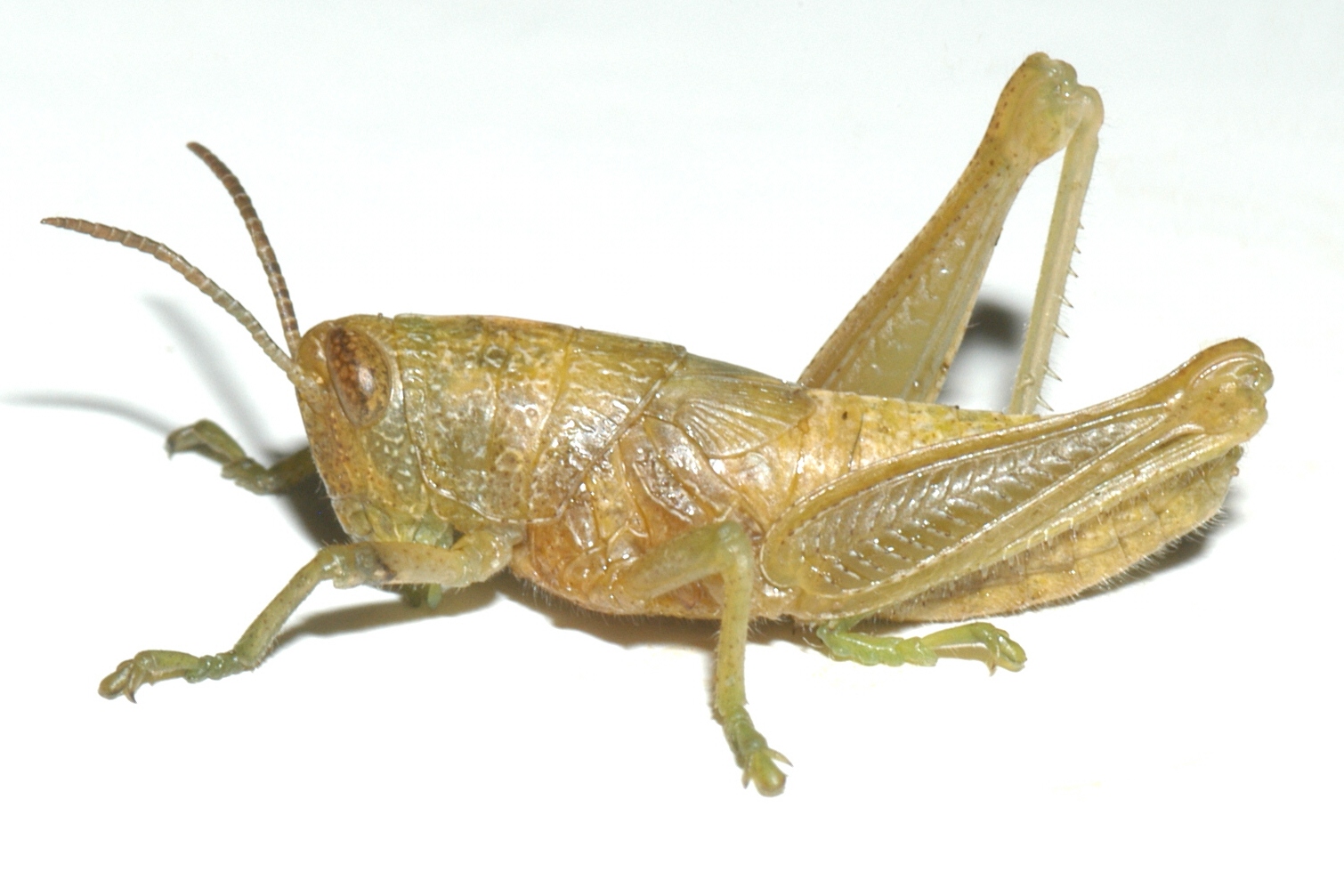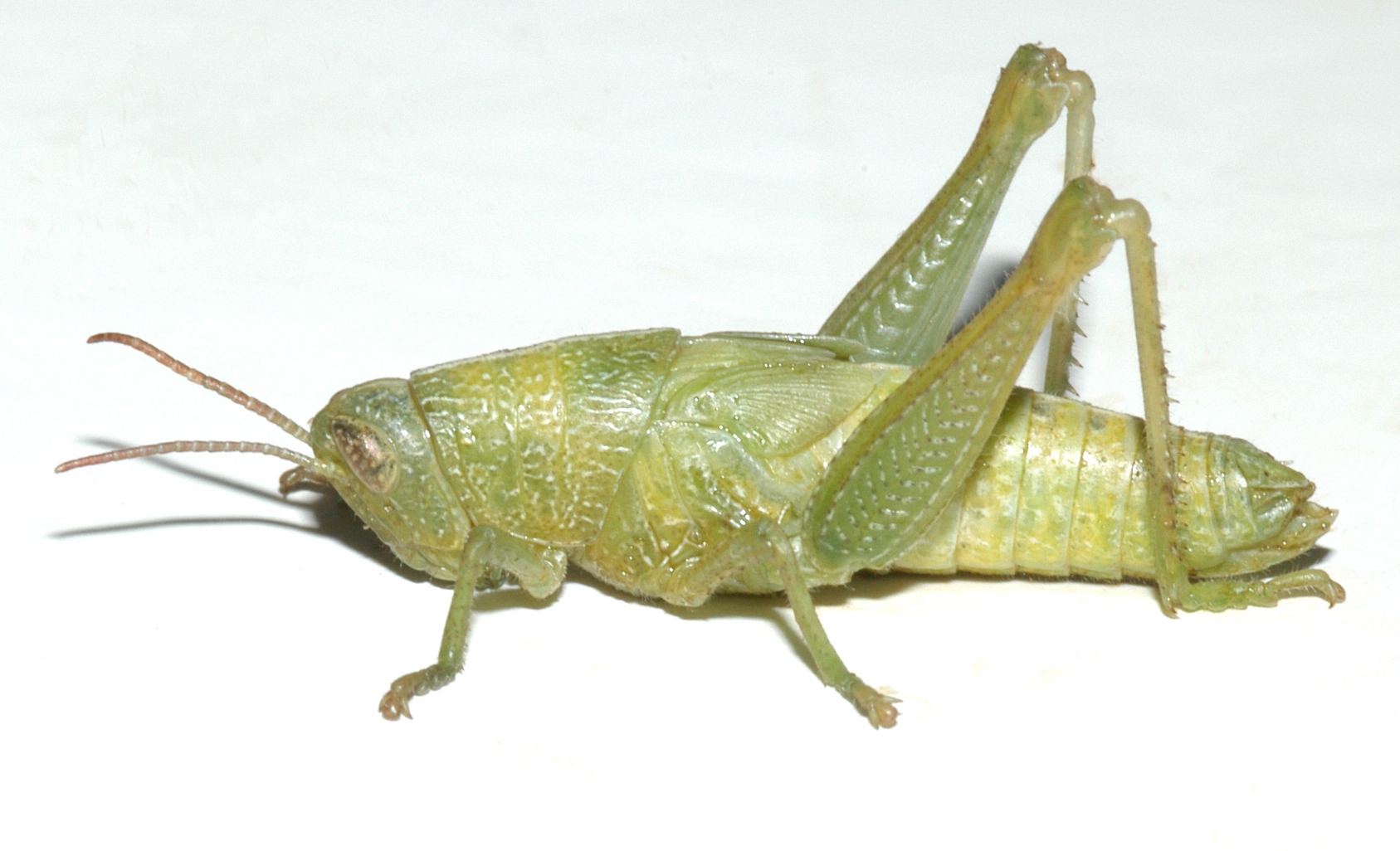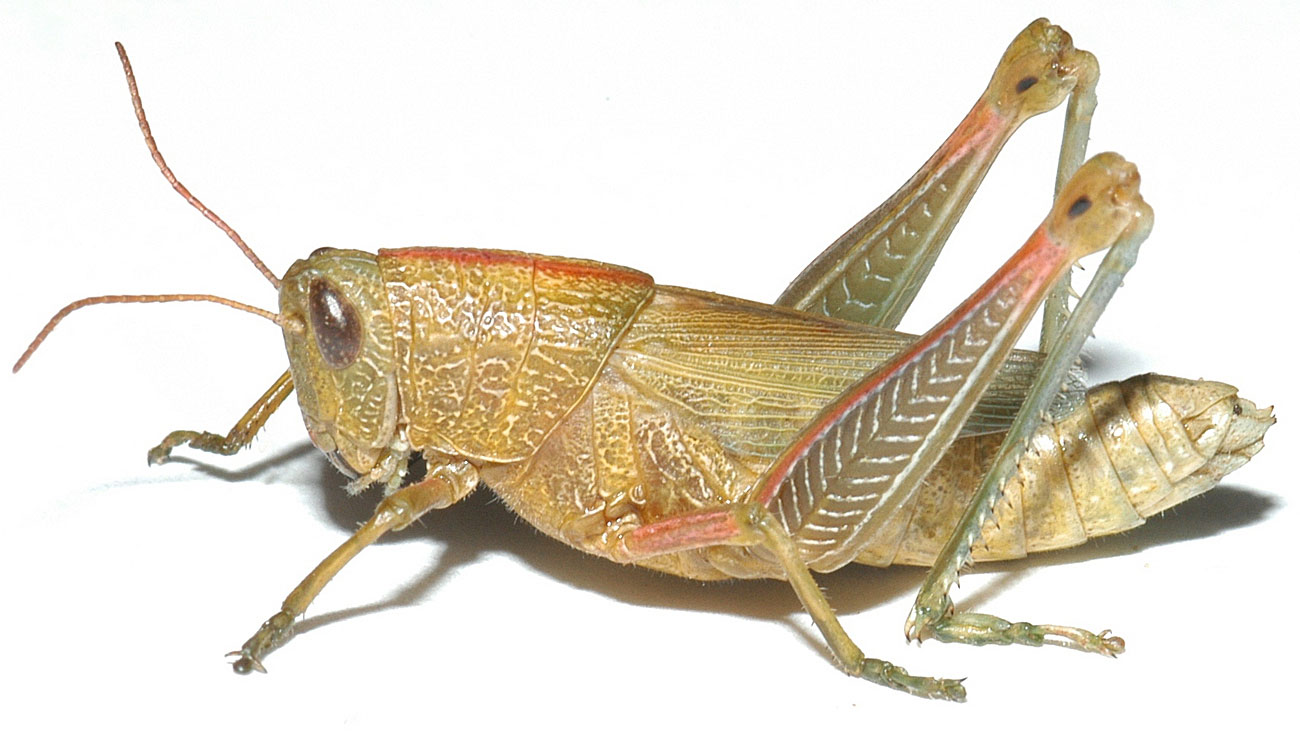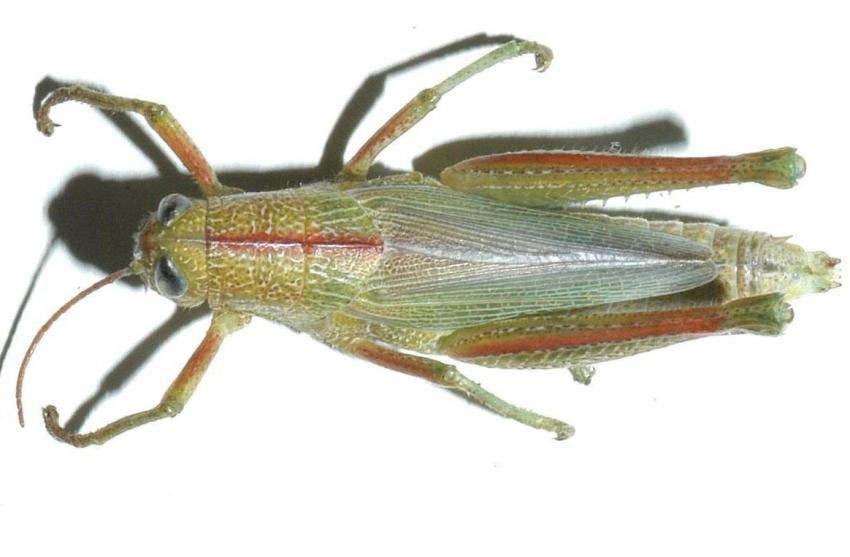Hesperotettix speciosus
|
Geographic range of Hesperotettix speciosus (Scudder) |
|
Fig. 1, fourth instar |
|
Fig. 2, fifth instar |
|
Fig. 3, adult male: BL 19-24 mm, FL 11-15 mm, AS 19-22 |
|
Fig. 4, adult female: BL 24-34 mm, FL 14-19 mm, AS 21-23 |
|
Fig. 5, dorsal view of western green grasshopper |
Species
Western green grasshopper
Hesperotettix speciosus (Scudder)
Subfamily Melanoplinae
Identification
The western green grasshopper is overall greenish in color with purplish red in several distinct areas; in broad line on the middle of the thorax, along the dorsal edge of the outer hind femur, on the antennae, and suffused in the front areas of the tegmina. Orange-red areas occur in a band on the front and middle femur and just below the knee on the hind femur. The green color is interspersed with a network of small, thin whitish markings scattered nearly throughout. The outer hind femur is green with a scattering of fine white markings, purplish red along the dorsal margin, and orange-red just below the knee. The inner hind femur is unmarked green with some orange-red suffusion just below the knee. The hind tibia is bluish over the basal two-thirds, blending into greenish over the distal third.
Distribution and habitat
This colorful grasshopper occurs from Montana, North Dakota, and Wisconsin, to Illinois, Texas, and eastern New Mexico. It can be fairly common on rangeland with light, well-drained soils. In Nebraska, it is consistent in the sandhills, and somewhat less common but present in rangeland on loess soils in the central plains region.
Economic importance
Because of its preference for weedy forbs, it is unlikely to be a pest of rangeland, and might be considered beneficial in its preference for weedy species.
Food preferences
This grasshopper feeds primarily on forbs and only infrequently feeds on grasses. The grasses found in crop analyses were Agropyron smithii and Panicum scribneranum. Known forbs consumed include Ambrosia psilostachya, Helianthus anuus, Iva xanthifolia, Lappula redowski, Psoralea esculenta, Solidago missouriensis, Sphaeralcea coccinea, and curlycup gumweed. It appears to show a preference for sunflower, western ragweed, and goldenrod.
Dispersal and migration
As this grasshopper possesses wings which are usually shorter than the abdomen, it is apparently incapable of flight. Dispersal is likely limited to local areas.
Hatching
This grasshopper is likely in the intermediate hatching group.The life history has not been studied in detail. Egg pods usually contain about 15 eggs, each of which averages 5 mm in length and 1.5 mm in width.
Nymphal development
The nymphal stages have not been studied in detail. It likely requires five instars for adult development.
Adults and reproduction
Adults begin to appear in late July and are most abundant in August and into September.
Population ecology
The population ecology of this grasshopper has not been studied. It is seldom abundant but is apparently consistent in most areas where it occurs. It can become numerous in areas infested with its preferred host plants.
Daily activity
The daily activity of this grasshopper has not been studied.
Source and date
University of Nebraska by Mathew L. Brust March 2007
Selected references
Alexander, G. and J. R. Hilliard, Jr. 1969. Altitudinal and seasonal distribution of Orthoptera in the Rocky Mountains of northern Colorado. Ecological Monographs 39: 385-431.
Blatchley, W. S. 1920. Orthoptera of Northeastern America, with especial reference to the faunas of Indiana and Florida. The Nature Publishing Company, Indianapolis, Indiana. 784 pp.
Capinera, J. L. and T. S. Sechrist. 1982. Grasshoppers (Acrididae) of Colorado: Identification, biology and management. Colorado State University Experiment Station Bulletin No. 5848. 161 pp.
Coppock, S., Jr. 1962. The grasshoppers of Oklahoma (Orthoptera: Acrididae). Oklahoma Agriculture Experiment Station Processed Series P-399: 1-143.
Gillette, C. P. 1904. Annotated list of Colorado Orthoptera. Colorado Agriculture Experiment Station Bulletin 94: 17-67.
Hart, C. A. and H. A. Gleason. 1907. On the biology of the sand areas of Illinois. Bulletin of the Illinois State Laboratory of Natural History 7: 137-272.
Isley, F. B. 1938. The relations of Texas Acrididae to plants and soils. Ecological Monographs 8: 551-604.
Kirk, K. and C. R. Bomar. 2005. Guide to the grasshoppers of Wisconsin. Bureau of Integrated Science Services, Wisconsin Department of Natural Resources. 154 pp.
Mulkern, G. B., K. P. Pruess, H. Knutson, A. F. Hagen, J. B. Campbell, and J. D. Lambley. 1969. Food habits and preferences of grassland grasshoppers of the north central Great Plains. North Dakota State University Agricultural Experiment Station, North Central Regional Publication no. 196. 32 pp.






